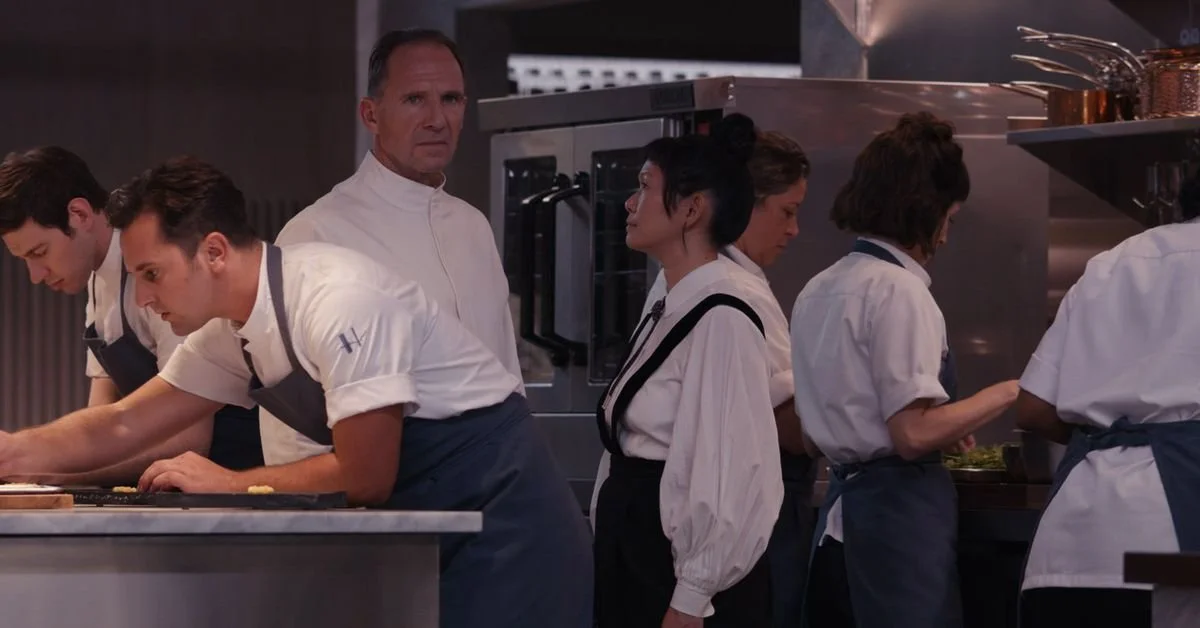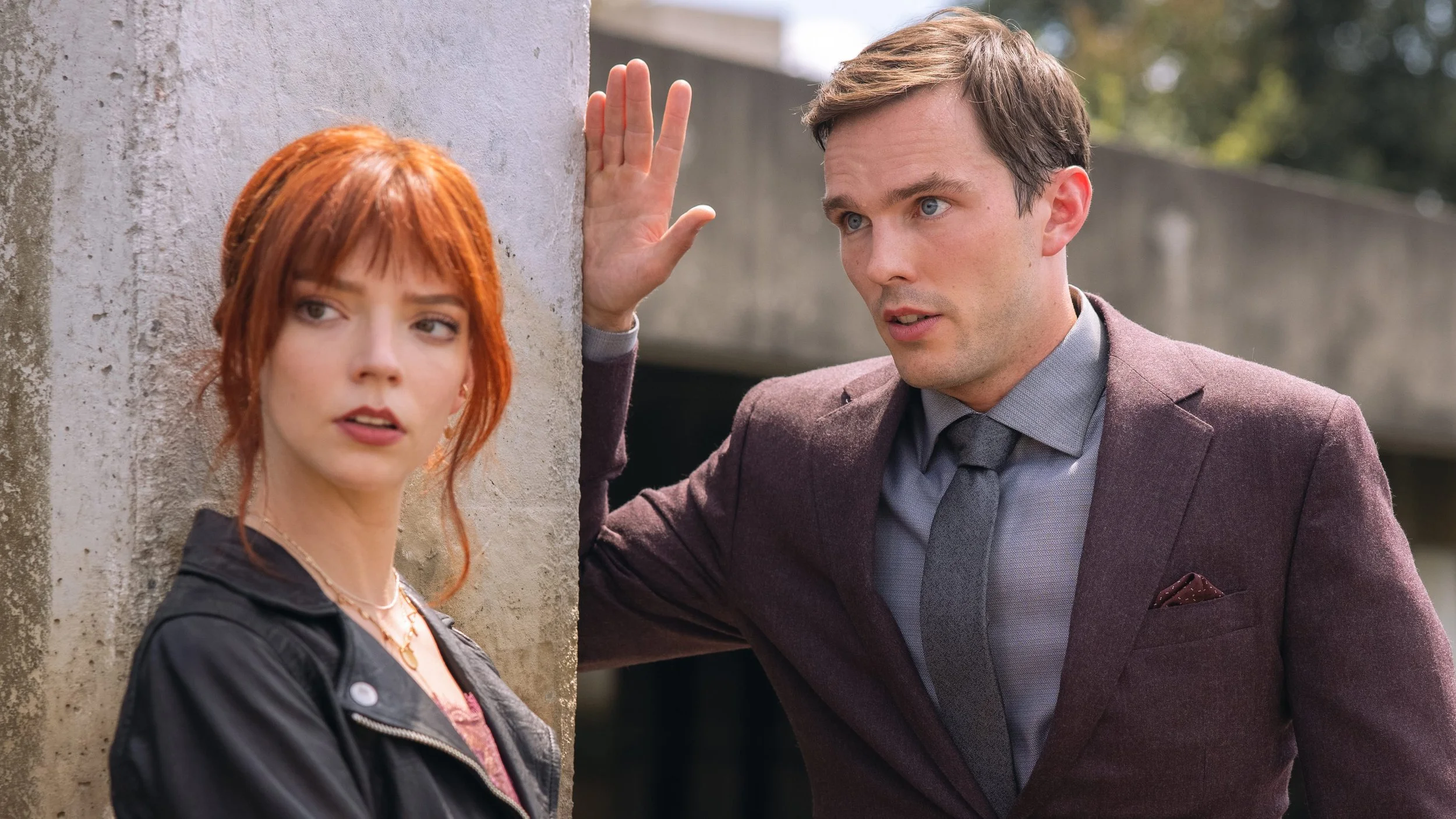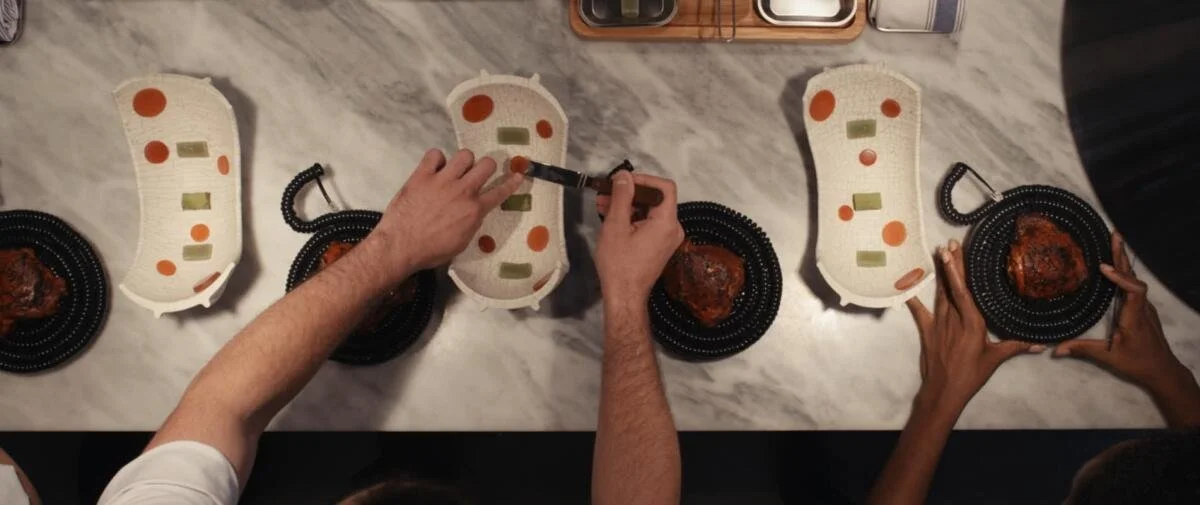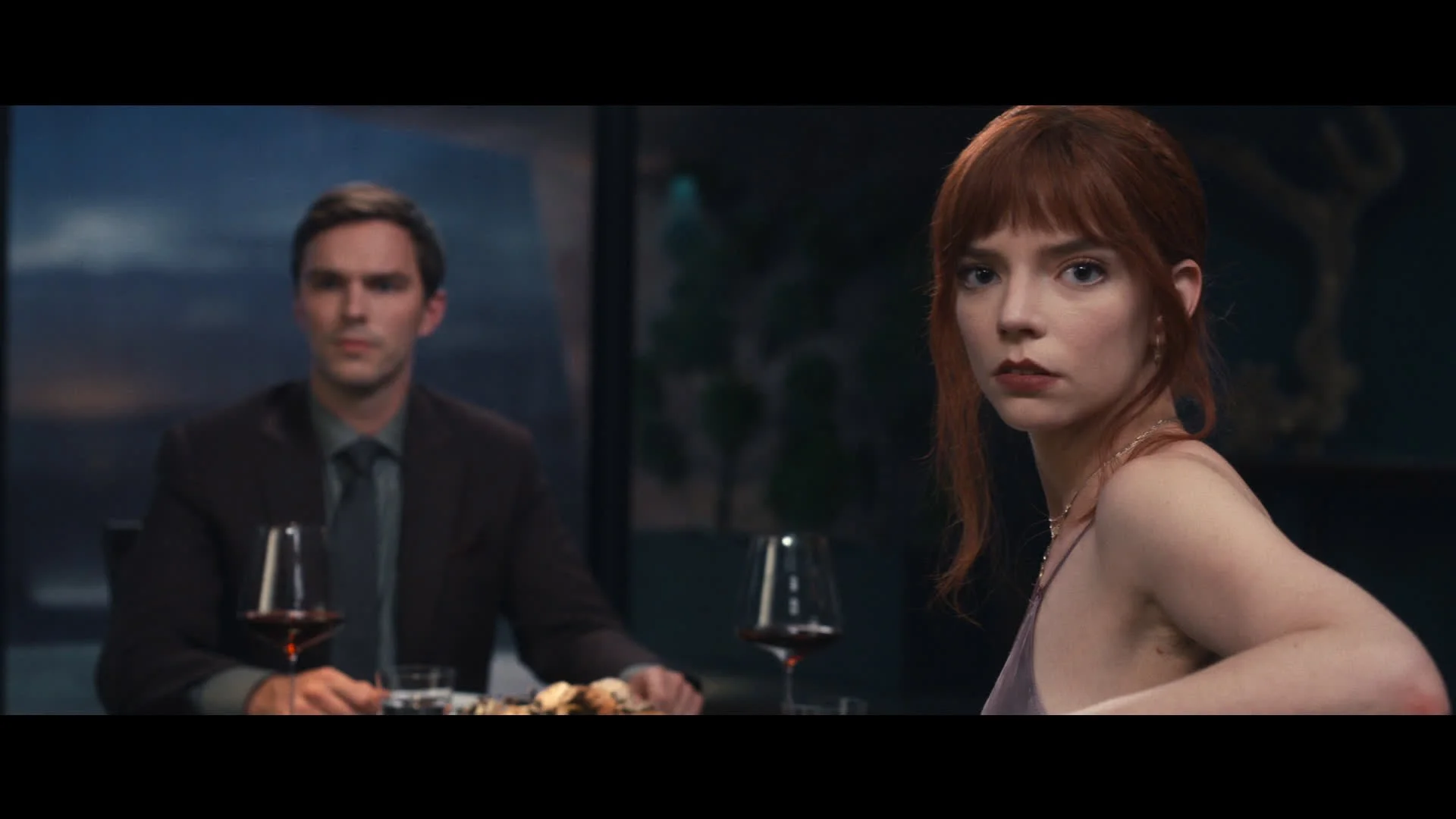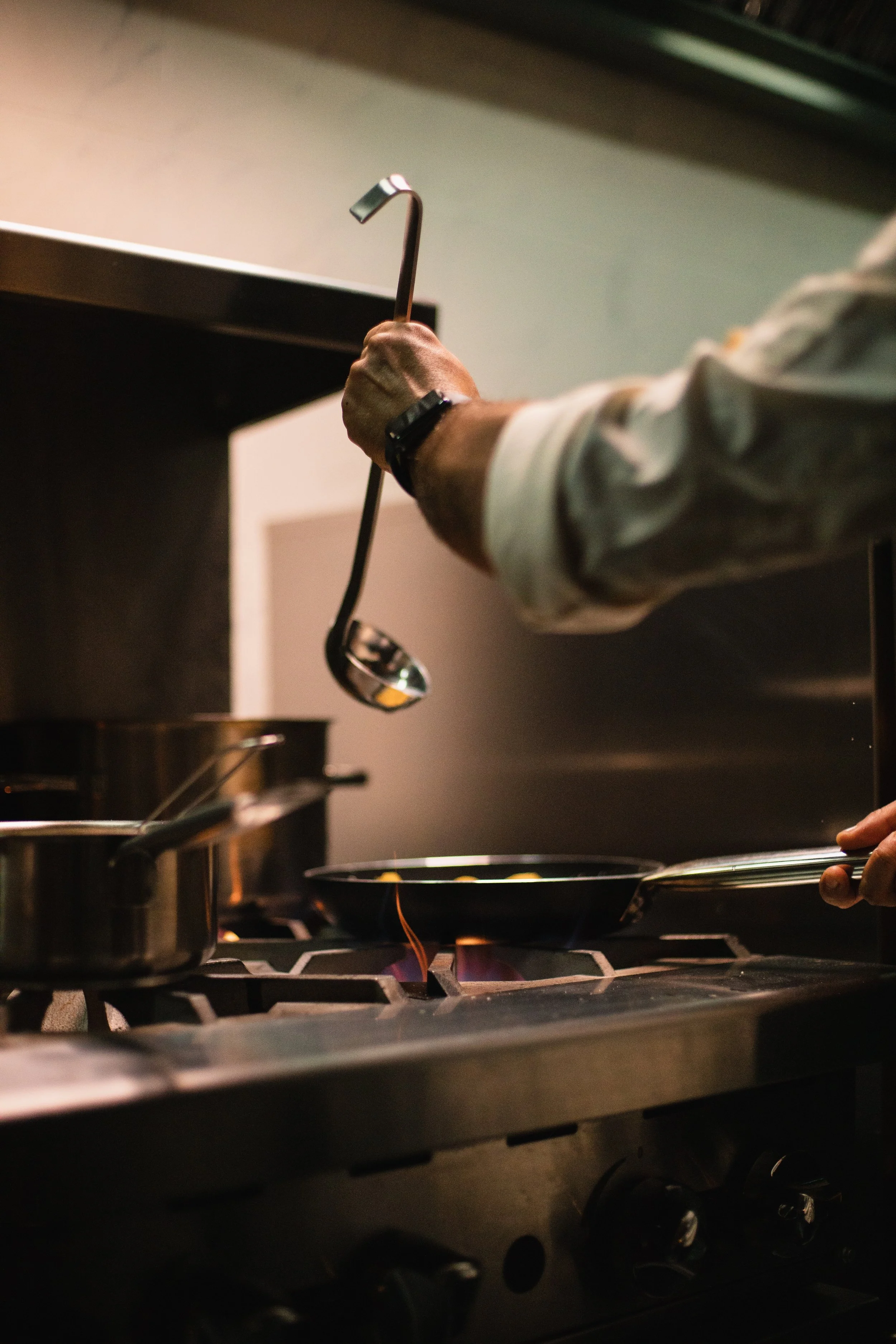The Menu: Movie Analysis
The menu starring Ralph Fiennes is one of my favorite movies in a long time. It premiered in theaters in November 2022 but was released to digital platforms at the beginning of 2023. I had the pleasure of watching it on HBO Max. For most people, this subtle horror film is very challenging and difficult to relate to. After all, how can you relate to people being killed while enjoying a $1,250 per person dinner at an exclusive restaurant by a ‘psychotic’ chef played by notorious villain-casted actor Ralph Fiennes?
It seems impossible. However, as I watched this movie, again and again and yet again. Face it, I’ve probably seen this movie seven times so far and we are only in the 4th month of 2023. To me, it is THAT good and challenging at the same time. It challenges your moral compass and makes you question by the end of the movie “Did these people deserve this?” It accomplishes the same motive of “Black Mirror” without me having to take a month’s break to re-evaluate my life.
I’m getting ahead of myself. I can give you a brief overview. The move opens with Anya Taylor-Joy as Margot waiting for the ferry to pick her and her date, Tyler, up to take them to the exclusive Hawthorne restaurant on a secluded island. They are joined by an older married couple, three tech executive “bros,” an actor and his personal assistant, as well as a food critic and her magazine publisher. This story is told mostly from the POV of Margot with some switching of POV as the story unfolds and reveals why they are at this particular life-changing dinner.
Anyway, Margot is smoking and Tyler reprimands her for smoking because it will ruin her palette. Their interaction weirdly yet accurately reveals their lack of chemistry as Margot panders to Tyler’s wishes. The weirdness continues when it is revealed that Tyler’s reservation was planned for him to be there with another woman. The maitre d, Elsa, conveys the annoyance of this happenstance early on in the movie with spectacular acting skills. Either way, the patrons finally make it to the restaurant after a tour of the island and the staff’s living quarters. They also get to see areas like their smokehouses and farms where Elsa blesses us with more of her sarcasm. (Did I not mention that I love this movie)
One thing about Elsa, she says the thing that I wish I could have said during the times when I worked in the service industry. If you have ever worked in customer service or even in a restaurant where everything is about making sure the customer never complains about anything even to your own detriment. Elsa is the voice in your head that you have to make sure not to voice aloud. Even down to the times when she tells the patrons “No” and doesn’t budge! *chef’s kiss”. Elsa’s loyalty as well as everyone on staff at the Hawthorne is to chef Slowik, and the Menu. Everything…and I mean EVERYTHING is a part of the Menu from the moment everyone steps onto the boat.
Anyway, while Margot may be our avatar for this experience, the reason she is there is because of her date, Tyler. Tyler is a HUGE fan of Slowik’s work and could spend hours upon hours reciting cooking factoids and worshiping everything that is Chef Slowik. He spends quite a bit of time monologuing and essentially stroking the metaphorical dick of a man that he has never met but desperately wants to like and respect him to the point of disrespecting the people around him, including his date. Margot makes a point of telling him that he didn’t learn the name of one of the cooks that knew his name because he was a guest. Tyler just brushes this off as if this man that is PREPARING HIS FOOD, and eventually one of the people serving his food, didn’t matter. Yes, the cooks were also the servers. A very accurate yet pointed look at what it’s like being a service worker.
Ralph Fiennes and Hong Chau in a scene from “The Menu.”
© 2022 20th Century Studios All Rights Reserved.
Once we get to the start of the menu, for the most part things are typical. Chef Slowik gives a welcome and introduction. He goes on a fantastical monologue that compels the patrons to not just eat, but to taste, savor, etc. It’s really quite lyrical the way he does this which can seem pretentious or just an artist giving instructions as to how to enjoy his art.
Each course comes with the opening of Slowik giving a loud clap and giving a brief discussion of the inspiration of the meal and what the people will be eating. The first few courses are more subtle. He talks about how the island represents the ecosystem and nature and how humans are essentially disruptors and takers of things that are quite sustainable without them. This sentiment was served with a raw scallop on a rock with a sprinkle of sea water. A meal that the food critic referred to as “thalassic” because they were “eating the ocean.” <insert eye roll here>
For the next course Slowik starts talking about bread and how bread has been used universally as the food of the poor and lower class. Regardless of culture, bread is one of the more basic things that a person could eat. It is the “food of the common men.” Therefore, since none of the people there were common men, they received no bread. They received the accompaniments that you would dip the bread in, but not the bread itself. Oh the responses that came from this. There was fake laughter then just disbelief.
The tech bros decided they were going to ask Elsa for some bread and specifically some gluten-free for one of them. To which Elsa said, “No.” Their faces were everything. They even tried the ‘Do you know who we are?’ bit. With her final “No,” they dismissed her, but she still got the last word. “You will eat less than you desire, and more than you deserve.” ICONIC!!! This woman needs to get someone’s “prestigious award” that she will realistically be snubbed at.
Tyler is, of course, impressed and gushing over the way Chef communicates and man-splains the definition of a concept. Margot is unfazed and thinks Chef is an asshole, which I get, but I also enjoy. The food critic is just lapping everything up and sees everything as theatrical and part of the experience. That is until she notices that one of the accompaniments is a broken emulsion (Oh the horror!!). It is then reinforced how easily Chef can hear and see them when one of the cook/servers brings a giant bowl of a broken emulsion to their table, courtesy of Chef Slowik. (Love the pettiness)
I am not sure if the broken emulsion is meant to signal the deterioration of the evening from this point, but things definitely take a sharp turn with Jeremy Louden’s dish “The Mess.” It starts with the official introduction of Jeremy, which is very telling because Jeremy was the second staff member to really talk on the island, and we don’t get to find out his name until now. Very indicative of how service workers are treated. Anyway, Chef Slowik introduces Jeremy after a tarp is suspiciously laid down with some branches on top. He talks about how Jeremy, like himself, has spent his entire life building his craft when it comes to cooking. In fact, Jeremy, like himself, has sacrificed everything, in efforts to attain what Chef has. However, it is for naught because Jeremy is good but will never be “great.”
Which begs the question “What is the cost of greatness?” For Chef Slowik, it was giving his entire life to this profession and full isolation and elevation to a point where only the upper crest of society could even experience his food. Does that come with an elimination of integrity and morality? Does it come with sacrificing freedom for the sake of art?
So when Slowik finally asks Jeremy if he wants his life, not his money or talent. The reality of the moment sinks in for everyone present. Because while prestige is great to look at it, is it worth the cost? So when a verging on tearful Jeremy says “No Chef,” it is like the last brick in the tortuous pressure that is at the heart of ambition. What happens when the thing you’ve spent your entire life on and given so much toward no longer brings you joy or contentment? Even worse, what happens when your life’s work is no longer something you want? And with that, Jeremy put a loaded gun in his mouth and shot himself.
Now, let’s be clear, this was a shock. However, as an artist/creative and ambitious individual that has worked for years on their craft, I also understood it. The level of emptiness is something that for many would be unbearable. What do you have left if not the thing you have been working all of your life toward. In the case of Jeremy, he lived on that island with all of the other Hawthorne staff. He gave up hopes of family, friends, social life, etc in an effort to be great, something that according to Chef he would never achieve. Also, what happens when your mentor delivers a blow like that, or when you have a self-realization that your goal is unattainable? What do you have left? What do you do with that empty feeling? Some people never stop on that trajectory regardless of the known outcome. What I imagine to be a very few people actually pivot into something that is more enjoyable. The rest perhaps fall into despair or like Jeremy, end it all. What is the price of ambition?
I can go on and on about this movie and will for a little while more. Like for example, how Chef tackles appreciation of art in two sets of characters. The first being the couple Anne and Richard. They are wealthy, affluent and are there for the sheer fact that they can afford it multiple times over, but could care less about what goes into it. They show it in the beginning of the movie when they elect to not go on the island tour because they have seen it multiple times. Chef speaks directly to them, calling them his most loyal patrons. He makes it clear that his food is at a price point where most people consider themselves blessed to come to his restaurant once. This couple didn’t even remember how many times they had come there. To make matters worse, they couldn’t even remember any of the meals they had in their last visit.
Now, could the fact that Richard was missing his ring finger be a hindrance to his recall, maybe. However, I suspect they wouldn’t have been able to recall one ingredient they had prior without the added pain and shock. Anne tried to remember, but she got it wrong. She thought they had cod when in fact it was halibut. She then asked the question that any typical person would have asked “What does it matter?” Chef Slowik’s line was the perfectly executed and worded answer to the artist’s plight when trying to monetize.
“It matters to the halibut, and to the artist whose work turns to shit inside of your gut.”
That statement alone could have been the end of the movie because it illustrates the hardship that comes from being an artist that wants to survive and continue making art, so they have to sell it. The idea of putting so much of ourselves in every painting, sculpture, dish, book, poem, etcetera and having it sold to an individual that is just going to consume and later dispose of it is frankly insulting to the effort put in. Art is not put on an assembly line until it is ready to be mass produced. Until then, it is an extension and reflection of the artist. The offensive nature of consumption is both frustrating and absolutely necessary for survival. As Slowik said these were his loyal patrons. At $1,250 per person, that is nothing to disregard.
Even his angel investor, Doug Verrick, was the thing that kept his restaurant afloat and allowed Chef the freedom to take his art to peaks he never could have imagined from humble beginnings. However, the cost of having an angel investor is that he gets to have the ultimate say in how the art is made. After all, it is his money that is funding the venture. He gets to make changes and usurp artistic vision for his own benefit without any consideration for how the artist feels because he thereby owns the artist…until this point. Doug Verrick was the man the three tech bros worked for. He was also the reason that the tech bros were offended at being told “No” because they worked for the same man that owned the island and the restaurant they were in. Hell, they owned Chef Slowik except, as Slowik points out, now Chef Slowik owned Doug Verrick. In very reverent fashion Chef, the staff, and the patrons watch as Doug Verrick is slowly lowered into the ocean with a pair of angel wings strapped to his shoulders and hands tied behind his back. Once the water is no longer disturbed, Chef is free.
The other way that Chef deals with art appreciation is Tyler. Tyler’s appreciation is at the other end of the disrespectful spectrum. Tyler knows everything about chef’s work. He knows about the tools and the processes. He can pick out the taste of bergamot in the tea. He brags about having his own pacojet. He wants Chef to like and respect him. He does everything in his power to achieve this including disrespecting his own date Margot. Hell, he actually does worse than that.
Chef Slowik basically calls Tyler out. He shares how he and Tyler were in correspondence before. He let Tyler into this world of uppercrest 1% luxury. Tyler was told about that particular night. In fact, he was told the conclusion of the night as well. To the point that he repeated it verbatim. He was told that it would be the Chef's greatest menu ever and that everyone would die. Tyler was the only person outside of Chef and his staff in that room that knew how everything would end. To make matters worse, he still agreed to go to dinner. He agreed to bring a date because the Chef didn’t book tables for one. Unfortunately, Tyler’s date broke up with him before the dinner. (Maybe she wasn’t okay with dying after all.) Instead of just not coming or whatever, Chef hires Margot (our avatar) to be his date instead knowing that she would die and not telling her. Needless to say, Margot was upset.
Chef then changes his tone and marvels at Tyler’s knowledge of the craft of cooking. He even calls him a cook and has him come up to the front of the room and put on a chef’s coat. Then, he issues the order, “Cook.” After all, he is a cook, so he should cook. The problem is that for all of Tyler’s pretentious know it all attitude, he had no cooking skills at all. So when he was pressured to finally “show off,” he created a dish lovingly known as “Tyler’s bullshit” which Chef deems to be quite bad. To be honest, that was a compliment. Then, Chef delivers another epic line:
“You are the reason the mystery has been drained from our art.”
While Tyler is not the only reason, he represents the reason. Every artist knows what he means. It is the person that knows everything about the artist’s process but does not have the actual courage or skill to get his/her/their hands dirty. It is the person that can tell you why all of your efforts are wrong but will not be in the trenches with you. In other words, these are people that Brene Brown refers to as in the “cheap seats.” Like Tyler, they talk about a huge game but have nothing to back it up. They will have all of the language and critique about a specific genre of books, but have never penned a word of creative thought. They are the ones that consider themselves authority on abstract art but have never picked up a paintbrush, sculpting tool, or anything similar.
With the full understanding of this and the utter shame of being exposed for being a phony, Tyler did what he was told by Chef and hung himself by his own tie. Which as Chef shared, freed Margot.
There are so many other parts and characters I could talk about. I could talk about the movie star and his representation of no longer taking pride in your art, his assistant for benefiting from nepotism and still stealing from her boss and feeling superior to him. I could talk more about the food critique and magazine publisher. I could get into the weeds of Chef’s desire to people-please which started with his mother and pushed him to the point of where only certain people could partake in what he loved to do. I could get into the “Man’s Folly” portion of the meal that deals with men in power and what happens when that is stripped away even when given the chance to fight for it.
This movie has so many points to it that are good and complicated and thought-provoking. For people that don’t understand it or don’t want to understand it, this movie may not be for them, and that is okay. Two of the themes that stood out to me the most were as follows:
Eat the Rich: Chef Slowik started from humble beginnings and was the happiest when he was creating food for “the common man.” The idea that his life’s work had attained a status that excluded the very people he originally was happy to feed contributed to his disdain for his own art. It wasn’t until Margot stood up to him and called him out and asked for an “ordinary cheeseburger” that he even smiled again. Slowik’s menu was a direct call out to economic inequities and capitalism at large.
The “we are family” line: One of the biggest questions I had even after watching the movie three times, was how did Chef get all of his cooks and servers to agree to kill themselves at the end of this meal. Like some of these people were not even talking figures. However, the answer was in the beginning of the movie. When Elsa shows the patrons where they all slept, except Chef, she talks about how they wake up early in the morning to prepare for the night's meal. Their entire lives were there. They were “family.” This statement has been called out in recent years for its toxicity in the work environment. It is a reason employers get away with not paying their workers a fair wage and improving work environments. It is why they have no concept of boundaries. This is a very extreme, yet realistic, example of this. Whether the people are committing suicide or dying from work-related stress and/or conditions, the impact is still the same.
Photo by Duane Mendes on Unsplash
I am definitely going to watch this movie again and again. I may come up with more lessons to learn from it. I may not. There may be a point where this movie is purely entertainment for me. Regardless, I find this movie to be an absolute gem and wish it had more recognition for how great it was done.
I hope to see more from these creators soon. Again, Ralph Fiennes (Slowik) and Hong Chau (Elsa) deserved every award they could have received from this movie. Anya Taylor-Joy did well in a role that could have been played by anyone that looked remotely similar to her. Hell, there are some actors that could have done the same role as well that look nothing like the woman. That is why I call the character Margot (a.k.a. Erin from Massachusetts) an avatar. She was meant to be the one that saw the story rather than a person that contributed heavily to it. In fact, she survived. Chef let her go because she really just didn’t belong there. This night wasn’t for her nor about her. She got to watch at a distance as the restaurant blew up with Chef, the cooks/servers, staff, Chef’s mom, and all of the patrons in it.
One of the things that really carried me through the movie was this one line “it’s all a part of the menu.” It was kind of difficult to stay invested in the movie because some of the moments were quite morbid. However, as you stick with it, you begin adopting the same mantra. It was all a part of the menu. It was all a part of this collective masterpiece that was meant to make a huge impact and leave you with questions, thoughts, opinions, and a bit of awe. That is in fact one of the purposes of art anyway.
Until later babes…
Photo by Tim Mossholder on Unsplash
